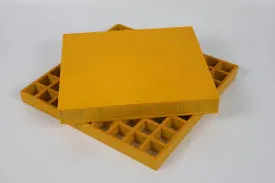
-
 Afrikaans
Afrikaans -
 Albanian
Albanian -
 Amharic
Amharic -
 Arabic
Arabic -
 Armenian
Armenian -
 Azerbaijani
Azerbaijani -
 Basque
Basque -
 Belarusian
Belarusian -
 Bengali
Bengali -
 Bosnian
Bosnian -
 Bulgarian
Bulgarian -
 Catalan
Catalan -
 Cebuano
Cebuano -
 China
China -
 China (Taiwan)
China (Taiwan) -
 Corsican
Corsican -
 Croatian
Croatian -
 Czech
Czech -
 Danish
Danish -
 Dutch
Dutch -
 English
English -
 Esperanto
Esperanto -
 Estonian
Estonian -
 Finnish
Finnish -
 French
French -
 Frisian
Frisian -
 Galician
Galician -
 Georgian
Georgian -
 German
German -
 Greek
Greek -
 Gujarati
Gujarati -
 Haitian Creole
Haitian Creole -
 hausa
hausa -
 hawaiian
hawaiian -
 Hebrew
Hebrew -
 Hindi
Hindi -
 Miao
Miao -
 Hungarian
Hungarian -
 Icelandic
Icelandic -
 igbo
igbo -
 Indonesian
Indonesian -
 irish
irish -
 Italian
Italian -
 Japanese
Japanese -
 Javanese
Javanese -
 Kannada
Kannada -
 kazakh
kazakh -
 Khmer
Khmer -
 Rwandese
Rwandese -
 Korean
Korean -
 Kurdish
Kurdish -
 Kyrgyz
Kyrgyz -
 Lao
Lao -
 Latin
Latin -
 Latvian
Latvian -
 Lithuanian
Lithuanian -
 Luxembourgish
Luxembourgish -
 Macedonian
Macedonian -
 Malgashi
Malgashi -
 Malay
Malay -
 Malayalam
Malayalam -
 Maltese
Maltese -
 Maori
Maori -
 Marathi
Marathi -
 Mongolian
Mongolian -
 Myanmar
Myanmar -
 Nepali
Nepali -
 Norwegian
Norwegian -
 Norwegian
Norwegian -
 Occitan
Occitan -
 Pashto
Pashto -
 Persian
Persian -
 Polish
Polish -
 Portuguese
Portuguese -
 Punjabi
Punjabi -
 Romanian
Romanian -
 Russian
Russian -
 Samoan
Samoan -
 Scottish Gaelic
Scottish Gaelic -
 Serbian
Serbian -
 Sesotho
Sesotho -
 Shona
Shona -
 Sindhi
Sindhi -
 Sinhala
Sinhala -
 Slovak
Slovak -
 Slovenian
Slovenian -
 Somali
Somali -
 Spanish
Spanish -
 Sundanese
Sundanese -
 Swahili
Swahili -
 Swedish
Swedish -
 Tagalog
Tagalog -
 Tajik
Tajik -
 Tamil
Tamil -
 Tatar
Tatar -
 Telugu
Telugu -
 Thai
Thai -
 Turkish
Turkish -
 Turkmen
Turkmen -
 Ukrainian
Ukrainian -
 Urdu
Urdu -
 Uighur
Uighur -
 Uzbek
Uzbek -
 Vietnamese
Vietnamese -
 Welsh
Welsh -
 Bantu
Bantu -
 Yiddish
Yiddish -
 Yoruba
Yoruba -
 Zulu
Zulu
Benefits of Using Fiberglass Grating in Various Industrial Applications
Fiberglass Grating A Versatile Solution for Modern Applications
Fiberglass grating, an innovative material widely used across various industries, represents a robust solution for flooring, walkways, and platforms. It is manufactured from a composite of fiberglass reinforced plastic (FRP), which gives it excellent strength, durability, and corrosion resistance compared to traditional materials like steel and wood. Here, we explore the numerous advantages and applications of fiberglass grating, making it an ideal choice for both industrial and commercial settings.
One of the primary benefits of fiberglass grating is its exceptional strength-to-weight ratio. This unique property allows for easy handling and installation while maintaining structural integrity under heavy loads. The inherent strength of fiberglass ensures that the grating can withstand extreme temperatures, chemicals, and harsh environmental conditions without warping or rusting. As a result, it is a popular choice in environments such as wastewater treatment plants, chemical processing facilities, and marine applications where exposure to corrosive substances is common.
Safety is another significant aspect of fiberglass grating. The surface can be customized with anti-slip textures, providing enhanced traction and reducing the risk of slips and falls, even when wet. This safety feature makes it particularly valuable for use in pedestrian walkways, industrial facilities, and platforms where personnel are frequently moving across surfaces. Additionally, fiberglass grating is non-conductive, making it an excellent choice for electrical applications, adding another layer of safety for workers in various sectors.
fiberglass grating

Another advantage is the lightweight nature of fiberglass grating compared to steel or aluminum. This feature not only simplifies transportation but also reduces labor costs during installation due to its ease of handling. Furthermore, the fiberglass material does not require regular painting or maintenance, resulting in long-term cost savings. Unlike metal gratings that often succumb to rusting or corrosion over time, fiberglass necessitates minimal upkeep, ensuring that structures maintain their integrity and aesthetic appeal throughout their lifespan.
The versatility of fiberglass grating is evident in its applications. It is utilized in a wide range of fields, including construction, food processing, shipbuilding, and oil and gas industries. Customizable in various sizes, colors, and styles, fiberglass grating can suit any project requirement, whether for aesthetic purposes or specific functional needs. Its design can accommodate various light and ventilation requirements, making it ideal for applications where illumination and airflow are critical, such as greenhouse floors or sewage treatment plants.
Moreover, the sustainability aspect of fiberglass grating cannot be overlooked. With an increasing focus on eco-friendly materials, fiberglass grating offers a viable alternative to traditional flooring solutions. Its longevity and resistance to decay contribute to reduced waste generation and fewer replacements over time. Additionally, advancements in manufacturing processes have led to more environmentally friendly practices in producing fiberglass composites.
In conclusion, fiberglass grating is a remarkable product combining strength, safety, and versatility to meet the diverse needs of contemporary industries. With its robust performance under adverse conditions, low-maintenance requirements, and customizable nature, it stands as a testament to modern engineering. As industries continue to evolve, the demand for innovative materials like fiberglass grating will undoubtedly grow, providing sustainable and effective solutions for various applications. Whether for industrial usage or commercial projects, fiberglass grating remains an indispensable resource in promoting safety and efficiency.









